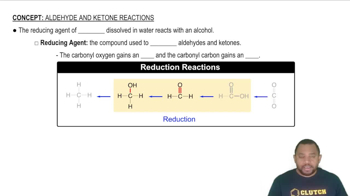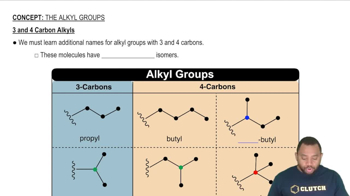Here are the essential concepts you must grasp in order to answer the question correctly.
Aldehydes and Ketones
Aldehydes and ketones are organic compounds characterized by the presence of a carbonyl group (C=O). Aldehydes have the carbonyl group at the end of the carbon chain, while ketones have it within the chain. This structural difference influences their chemical properties and reactivity.
Recommended video:
Aldehyde and Ketone Reactions
Carbon Chain Length
The carbon chain length in organic compounds refers to the number of carbon atoms connected in a linear or branched arrangement. In the case of 4-heptanone, 'heptan' indicates a seven-carbon chain, and the '4-' specifies the position of the carbonyl group, which is crucial for accurately drawing the structure.
Recommended video:
Structural Representation
Structural representation in chemistry involves depicting the arrangement of atoms within a molecule. For aldehydes and ketones, this includes showing the carbonyl group and the carbon chain. Understanding how to represent these structures is essential for visualizing molecular interactions and predicting chemical behavior.
Recommended video:

 Verified step by step guidance
Verified step by step guidance


